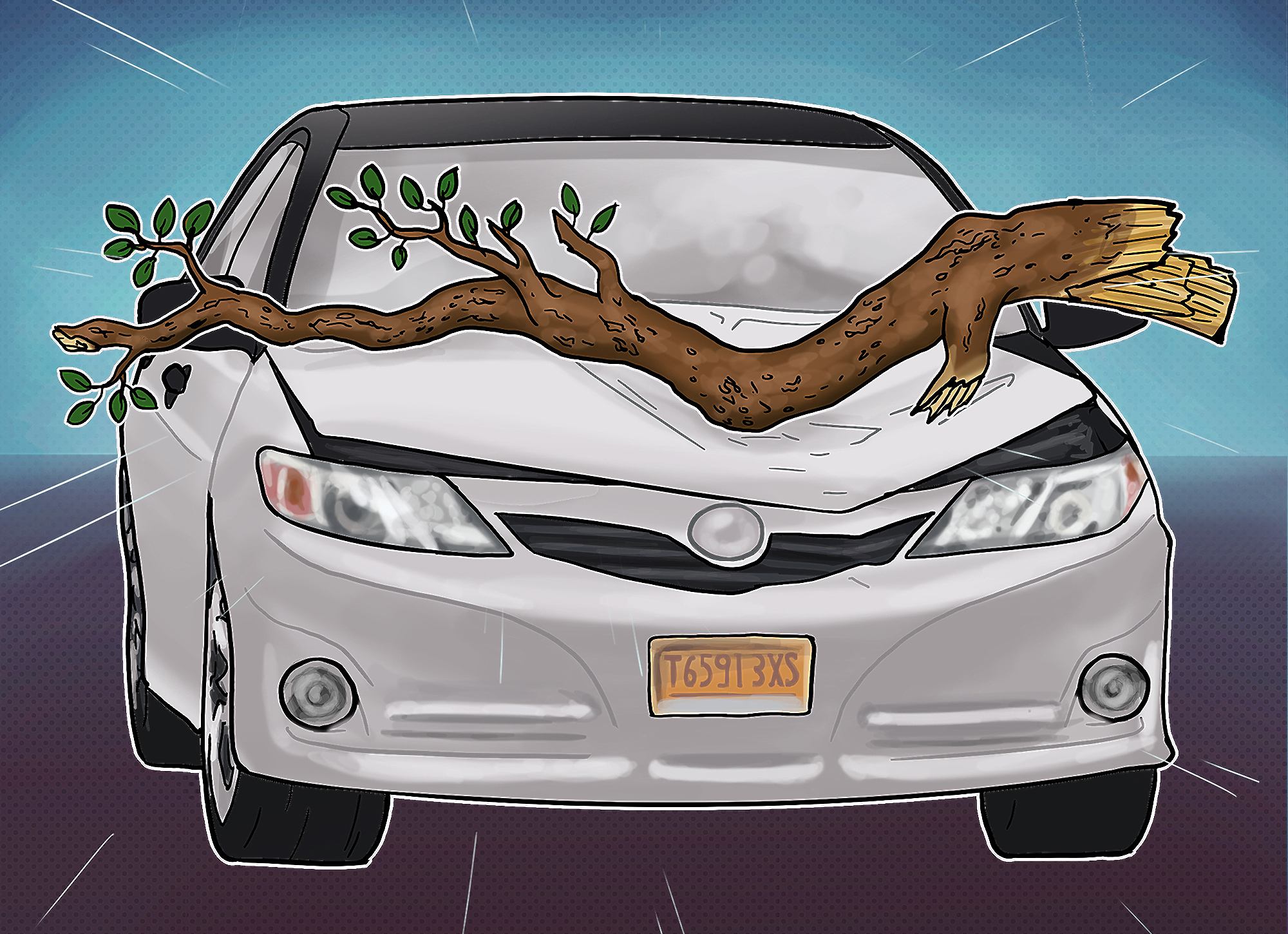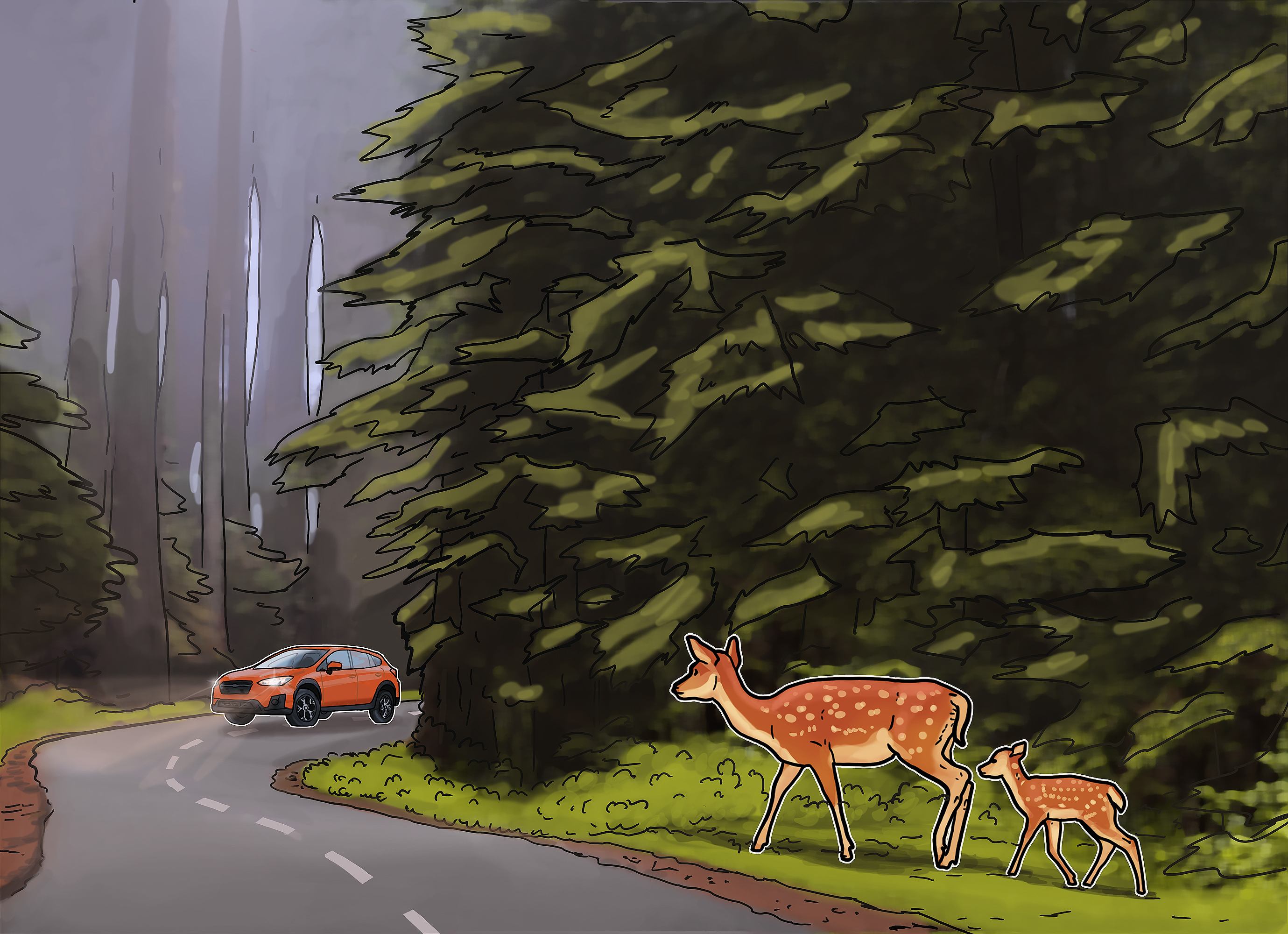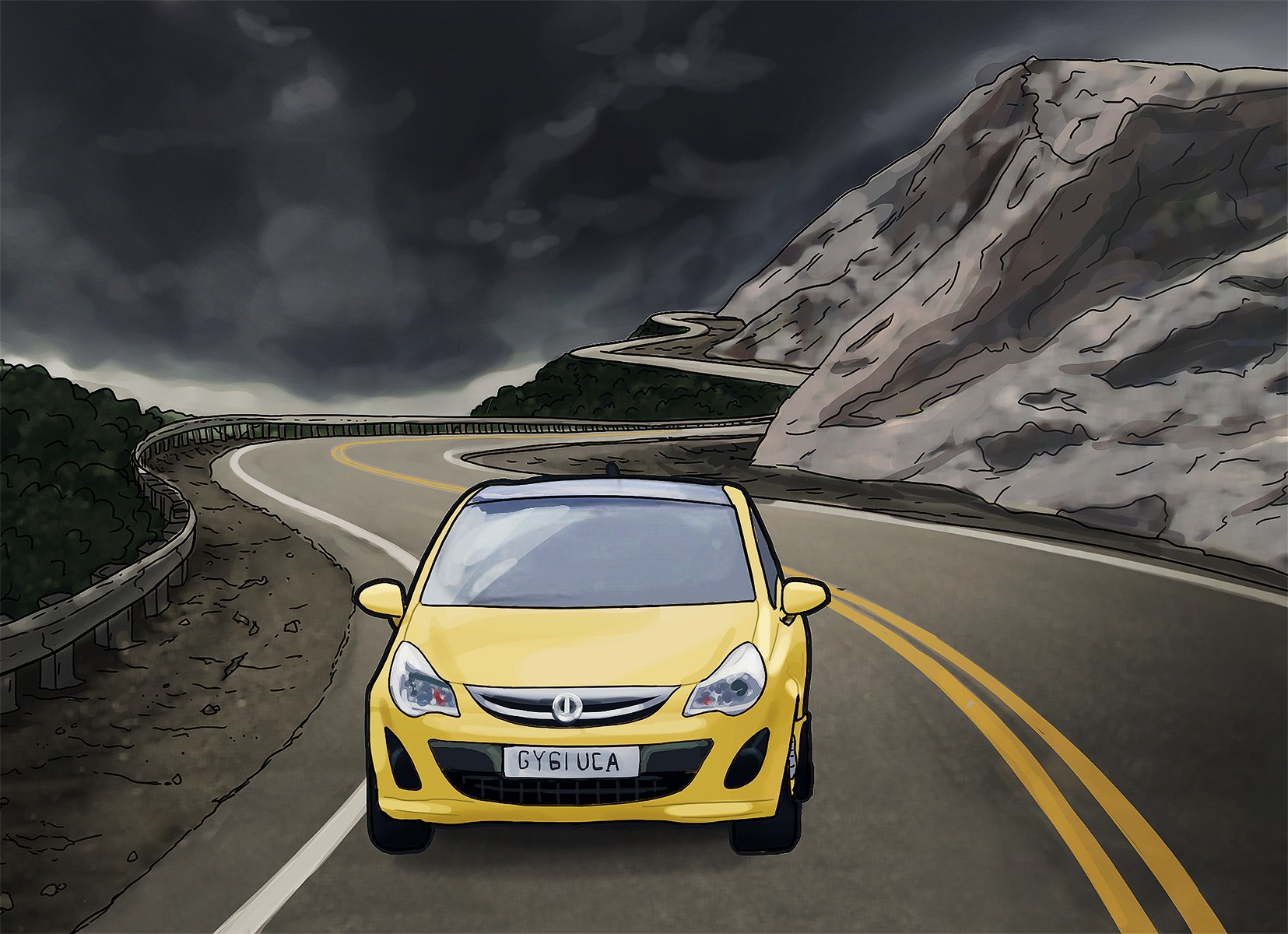The average comprehensive auto insurance claim approaches $1,800. For most households, that’s a big number. It’s also money families won’t have to pay out of pocket themselves because their insurance covered the loss.
Compare Insurance Rates
Ensure you are getting the best rate for your insurance. Compare quotes from the top insurance companies.
But what does comprehensive auto insurance cover, exactly?
Comprehensive insurance—also called comp—is optional coverage for physical damage to your vehicle. Some agents refer to comp insurance as “other than collision” coverage, making comprehensive insurance coverage easier to understand.
By this simpler description, comprehensive insurance covers damage to your car caused by reasons other than collisions.
Unlike collision coverage, which only covers a narrow set of risks, comp coverage can protect against a broad set of risks, some of which may surprise you. Your comp insurance can cover fires, theft, vandalism, or even floods, as well as other risks.
Collision insurance vs. comprehensive insurance
Insurers refer to the combination of liability insurance, which most states require, and physical damage coverage as full coverage. Both collision and comprehensive insurance cover physical damage to your car, but each coverage type protects against different risks.
First, collision coverage only pays for damage due to contact with another vehicle or a stationary object—or due to a vehicle rollover. When we think of auto insurance, we often think of collision coverage as a synonym. But collision coverage is just one part of a policy, and like comp, it is optional coverage. Collision insurance is also quite limited in what it covers.
By comparison, comp insurance provides physical damage coverage due to most other potential causes. In fact, comp coverage offers some protections for your vehicle absent on larger policies, such as your home insurance policy. Flood coverage is one example of something covered by comp but not your home policy.
What does comprehensive insurance cover?
If collision coverage covers collisions and rollovers, comprehensive insurance is coverage for (nearly) everything else.
Here are some of the risks covered by comprehensive insurance:
- Fire
- Explosions
- Theft
- Vandalism
- Riots and civil commotion
- Glass damage
- Falling objects
- Flying objects
- Hail damage
- Flooding
- Accidents involving animals
As you can see, comp coverage protects against a broad range of risks. But the circumstances of the claim can affect coverage. Claim coverage hinges on specific characteristics. Expect coverage for sudden and accidental damage to your car. However, your policy won’t cover damage caused over time.
Fire damage
The comp coverage on your auto policy protects against damaged caused by fire. If you keep your car in your garage, this coverage can be critical because your home insurance policy doesn’t cover physical damage to your vehicles. Your home insurance policy protects other items in your garage, but coverage for vehicles is specifically excluded.
If you have a fire at your home, the comp insurance on your auto policy protects your garaged vehicle.
Theft losses
Auto theft has been on the decline for the past few decades. Technology plays a crucial role in the fall in theft losses. Alarms and tracking technology make car theft less attractive, but the risk isn’t gone completely. Each year over 700,000 vehicle thefts still occur.
Comprehensive insurance covers losses due to theft of your vehicle, but your policy can also cover the theft of parts. For example, wheels and tires make common targets for thieves.
Perhaps surprisingly, catalytic converters see increased theft risk as well. From 2018 to 2020, the insurance industry saw an increase of over 1000% in the theft of catalytic converters. Catalytic converters contain precious metals that have increased in value.
It’s important to note, however, that your comprehensive insurance doesn’t cover the contents of the vehicle. Personal property coverage falls under your home insurance or renters insurance policy, even if you are away from home.
Vandalism / Malicious mischief / Riots
The comp coverage on your auto policy can also protect against damage due to vandalism. If you’ve ever come out to find your car has been keyed (or worse), you know how frustrating vandalism can be. It can also be costly to repair. Your auto policy with comprehensive insurance protects against losses due to vandals ranging from scratches to dents to broken windows or even arson.
Similar to vandalism, comprehensive insurance covers damage resulting from riots as well as civil commotion.
Glass damage
Among the most common type of claim for comprehensive insurance, glass coverage extends to all windows in your vehicle as well as the windshield.
Stone chips from road debris are a frequent cause of claims. These chips can spread, becoming larger cracks due to vibration and seasonal temperature changes.
Many insurers offer no-charge windshield repair for chips or cracks smaller than 6 inches. If the damage fits under a dollar bill, in many cases, it can be repaired. However, cracks or chips that obstruct the driver’s view may not be eligible for repair. Instead, the windshield may need replacement.
Compare Insurance Rates
Ensure you are getting the best rate for your insurance. Compare quotes from the top insurance companies.
Some insurers may even offer mobile repair. With mobile glass repair, the repair tech completes the repair at your home or your place of business.
Falling objects
Storms can cause a tree to fall or drop limbs. If you’re unlucky enough to park under a tree that falls or drops a limb on your car, the comprehensive insurance on your auto policy can help cover the damage.
In some cases, another party may pay for the repair costs if the damage was due to their negligence. For example, if a neighbor’s tree overhangs your driveway and the tree is dead or diseased, the neighbor may be liable for damage caused by the tree falling. Typically, your insurer pays for your repair but may pursue payment through the tree’s owner. This process is called subrogation and happens with many types of insurance.

However, if you hit the same tree with your car, your collision coverage pays to repair your vehicle rather than your comp coverage. In either case, your insurance policy can pay to repair the damage.
Flying objects
Sometimes other vehicles kick up dangerous debris, including stones or pieces of failed truck tires. In years past, these types of mishaps often cost less to repair. Many times, the damage only required buffing.
But today’s vehicles feature sensors and safety systems that can cause repair costs to skyrocket. Parking sensors mounted in the front grille can cost $1,300 each, and that’s without any other repairs. Front cameras have a similar replacement cost.
Hail damage
Severe thunderstorms produce hail of an inch or larger. But hail can vary in size, sometimes reaching the size of a baseball or softball. Large hail can cause thousands of dollars in damage to a vehicle in minutes.
For vehicles that have depreciated, hail damage can even result in a total loss.
Texas leads the nation in hail loss claims, nearly tripling the insurance claims due to hail in other states. But hail damage can happen anywhere in the country, and numbers can sometimes be deceiving. Texas has a lot of hail loss claims, partly because Texas has a lot of people. Relative to the number of people in the state, South Dakota has a claim frequency for hail-related damage 4 times higher than Texas.
Luckily, your comprehensive insurance covers damage to your vehicle caused by hail or other falling objects.
Flood damage
We’ve all seen videos of cars submerged after heavy rains or flooding. Your collision coverage can’t with flood damage, but your comprehensive insurance can save the day. Comp coverage helps cover the cost of damage due to floods or mudflow.
Accidents involving animals
Each year, nearly 2 million drivers (about the population of Nebraska) place claims for damage due to animal accidents.

You might think accidents involving animals fall under collision coverage, but this risk falls under your comprehensive insurance.
You might be surprised to learn the types of animal-related damage your comp insurance can cover. For example, if squirrels chew the wires in your car, your full-coverage policy can help pay for repairs.
Similarly, if a flock of birds lands in a tree and “redecorates” your car parked below, your comprehensive insurance can help pay for the damage to your paint.
Comprehensive insurance exclusions (what isn’t covered)
Every insurance policy uses exclusions to reduce abuse and keep coverage more affordable for everyone.
First, it’s essential to know that comprehensive insurance won’t cover intentional damage. For example, comp covers damage due to fire. But if you set your car on fire intentionally, the insurer won’t cover the claim.
Here are some other risks or loss types not covered by comprehensive insurance:
- Depreciation: Cars can depreciate as much as 20% per year (or more) in the early years of a car’s life. Comp insurance can’t insure depreciation loss.
- Wear and tear: Vehicles wear out over time. Comprehensive insurance targets sudden and accidental damage but can’t protect against normal wear.
- Mechanical failure: Similarly, comp insurance can’t protect against mechanical breakdowns. However, some insurers offer road service and towing as a policy add-on. These services can help get you back on the road.
- Personal property: Your auto insurance policy doesn’t cover personal items stored in your car. Instead, your home insurance policy protects your personal property. Secure your valuables out of sight or remove valuables from your vehicle when you park.
Coverage for aftermarket parts may also be limited. For example, if you put a $2,000 custom rear spoiler on your car, your policy may not offer coverage for the add-on. Policies typically cover vehicles in stock form. The same concept may apply to custom wheels or other customizations. Before investing in expensive customizations, discuss your coverage with your insurer.
How comprehensive insurance claims work
Most auto insurance policies provide coverage based on actual cash value (ACV). With ACV, your policy sets your car’s insured value based on market factors in your area. This insurance structure means your policy adjusts the insured value for depreciation.
The insured value of the car limits any physical damage claims. For example, if your car’s actual cash value is $10,000 and you have a comp claim with a repair cost of $15,000, the insurer will not pay more than $10,000. In this example, the vehicle is considered a total loss because the loss is higher than the insured value.
For antique, exotic, or collectible cars, insurance policies may use agreed value instead of actual cash value to determine your car’s insured value. Agreed value coverage does not adjust for deprecation. Instead, you and the insurer “agree” on an insured value.
How your deductible affects comprehensive insurance claims
Deductibles can become an important consideration for comprehensive insurance. The deductible is the part of the claim you pay, and a higher deductible often means lower premiums. But a higher deductible can also mean your coverage isn’t as helpful because it can’t cover many small claims.
For example, if you have a $500 deductible and then have a covered comp claim for $400 in damage, the insurer won’t pay on the claim. Following the same formula, an $800 claim with a $500 deductible only pays $300.
The cost savings of choosing a higher deductible may not be significant. Discuss your deductible options with your insurer.
When is comprehensive insurance required?
State laws don’t require comprehensive or collision insurance. Both are optional. However, lenders or leasing companies usually require full coverage, including comp coverage. Physical damage coverage protects the lender’s financial interest in the vehicle, so you’ll find comp among insurance types needed to satisfy the lending agreement.
Does it make sense to cancel comprehensive coverage?
With Americans keeping their cars longer, it’s crucial to weigh coverage choices. Comp coverage is one of the most affordable parts of your auto insurance policy. Because comprehensive is more affordable than collision, some drivers choose to keep comp even as their car gets older and its value falls.
Rather than cancel coverages you may need, shopping around might be a better strategy for cost savings. Compare auto insurance rates from multiple providers to see if there’s a price advantage.
Choosing comprehensive insurance as part of full coverage
Comp claims typically cost about half that of collision claims, but repairs can still add up quickly. Claim costs increased from $1476 in 2010 to $1780 in 2019.
However, comp insurance can protect against large losses without much effect on premiums in many cases.
For newer vehicles, comprehensive is a must-have coverage. But even for older cars, choosing comp coverage can still make good financial sense. If it fits your budget, give comp coverage a closer look.


Add Comment